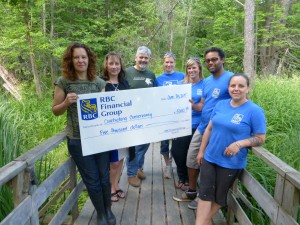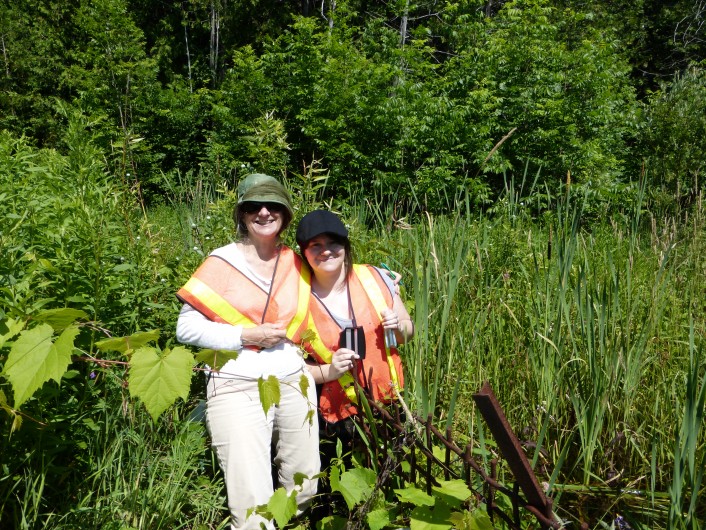Standing in the headwaters of Perch Creek on a soggy June afternoon turned out to be a revelation.
While it looked just like any other wetland creek draining through any other road culvert, the moment I looked in and then stepped down, everything was different. Watercress, and the immediate cold that seeped through my rubber boots to my feet, said it was a cold water creek. Dozens of minnows were swimming around. A leopard frog jumped for cover.
I was with Doug Forder and Deb Silver from Ontario Streams, and we were touring the Carden Alvar to select sites for our water quality monitoring project. While the study area of interest is Carden, Doug and Deb convinced me it would be worth driving the extra miles to seek out headwaters along the Monck Road.
Headwaters are like the foundation of a building, and if they are compromised, so is the entire watershed. If the headwater stream stays cold year-round, it is of primary importance because it provides the larger, lower portions of the river with a steady base flow of clean water. In turn, they are fed from groundwater originating from glacial formations such as moraines and drumlins.
It takes many sources to turn the Talbot River into the substantial waterway it becomes before entering Lake Simcoe. Some of the sources are as clean as water can get, such as the headwaters of Perch Creek. Others are dirty ditches with high levels of nutrients, which fertilize the water causing excessive algae growth.
Fourteen Couchiching Conservancy volunteers have now been trained to test water quality at points along the Talbot, Perch, and McGee Creek through the Ontario Streams Adopt-A-Stream program. These three arteries are all part of the Talbot River sub-watershed and eventually join forces to merge with Lake Simcoe south of Brechin. The teams are testing for seven water quality indicators including Temperature, Clarity, Oxygen levels, Ph, Alkalinity, and nutrients such as Nitrates and Phosphates.
While we are just starting out, we have learned a few things so far. The headwaters of Perch Creek and Talbot River at the Monck Road both have zero parts per million Phosphates, but by the time they reach Lake Simcoe they contribute an average of 5 tonnes per year. Perhaps this is why the Great Blue Heron have chosen to build a large rookery, or nesting site, at the top of the watershed rather than the bottom. On the day that water team volunteers Meagan and Trudy Coughlin arrived to take the first test, they were greeted by the loud cackling of dozens of young Heron.
Along with Intact Foundation, through McLean & Dickey Insurance, the RBC Bluewater program is supporting this water quality monitoring project
In addition to the financial contribution, staff from both branches of the Orillia RBC pitched in to help the Couchiching Conservancy prepare for the office renovations at Grant’s Woods.
 Daisy Grant (mother of Bill Grant who donated the property to the Conservancy) created an extensive formal English garden around the building that was once her summer home, and the Columbine, Lupine, Jack-In-the Pulpit, Lilies, and Daisies that grace the entrance to our office are all from her original planting.
Daisy Grant (mother of Bill Grant who donated the property to the Conservancy) created an extensive formal English garden around the building that was once her summer home, and the Columbine, Lupine, Jack-In-the Pulpit, Lilies, and Daisies that grace the entrance to our office are all from her original planting.
RBC staff went above and beyond the simple transplant we had in mind to a nearby trench, which would give the plants a safe home while construction is under way. They left us with a beautiful new rock-bordered garden for Daisy’s perennials. They also delivered a cheque for $5,000 from the RBC Bluewater Program, which we are using to establish our Carden Water Quality Project. Thanks for everything you do to support conservation in our region, RBC!

